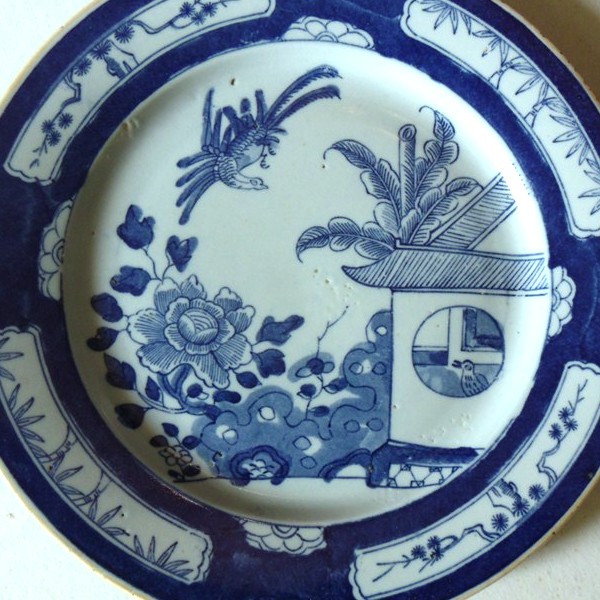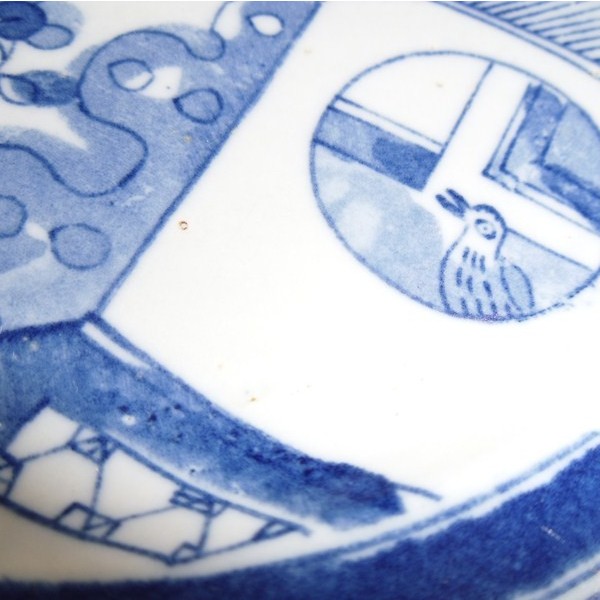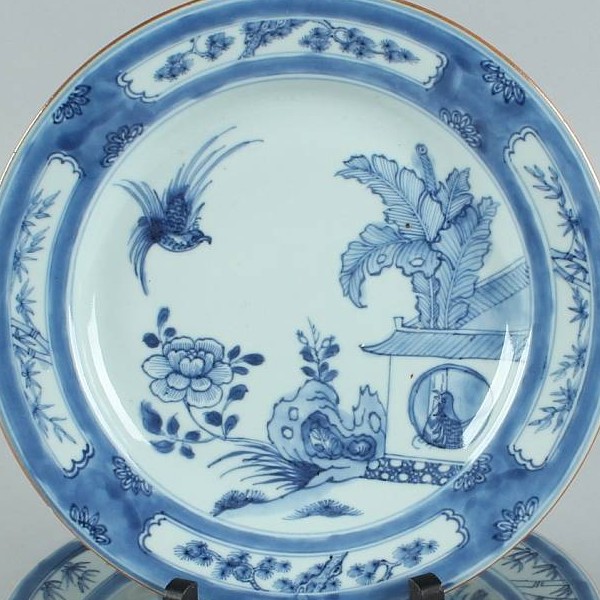
This is an example of printed decoration on porcelain. The decoration is copied from a hand painted Chinese export porcelain decoration, known in the trade as "Cuckoo in the house", and one way or another applied to a ceramic plate in some kind of print supported manner. You can see this from mostly the even washes and broken lines in the outlines. This plate have been extensively discussed on the Discussion Board without us coming to any final conclusion. Best guess is that it is a Dutch 19th century Petrus Regout Maastricht, Holland, ware but this is far from certain. It is printed though.

Close-up of the above.

The original antique Chinese hand painted decoration.
Differentiating between hand-painted and printed underglaze blue decorations can be tricky. Actually the way to go about to differentiate between hand painted and printed is to carefully study what hand painted decorations looks like. And only after this, try to see if what you are looking at really fulfills all criteria of any hand painted decorations. What you should look for are traces of the artists hand, brush and temperament. Basically; printed decorations are most of the time lifeless compared to original drawings on porcelain. Sometimes - in the failures - you can spot the artists hand, in printed decoration, but that is a little bit outside of the purpose and meaning of this page.
But, here are some things to look for in printed decoration on Porcelain:
Overall, examining the decoration closely and looking for any signs of brushwork or slight color variations can help determine if a piece of underglaze blue porcelain was hand-painted or printed and looking for textile patterns, folds, cracked lines or pattern mis-alignments are good clues for prints.
A